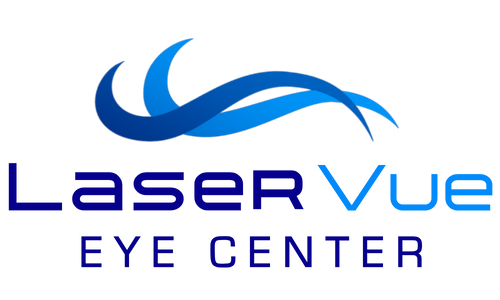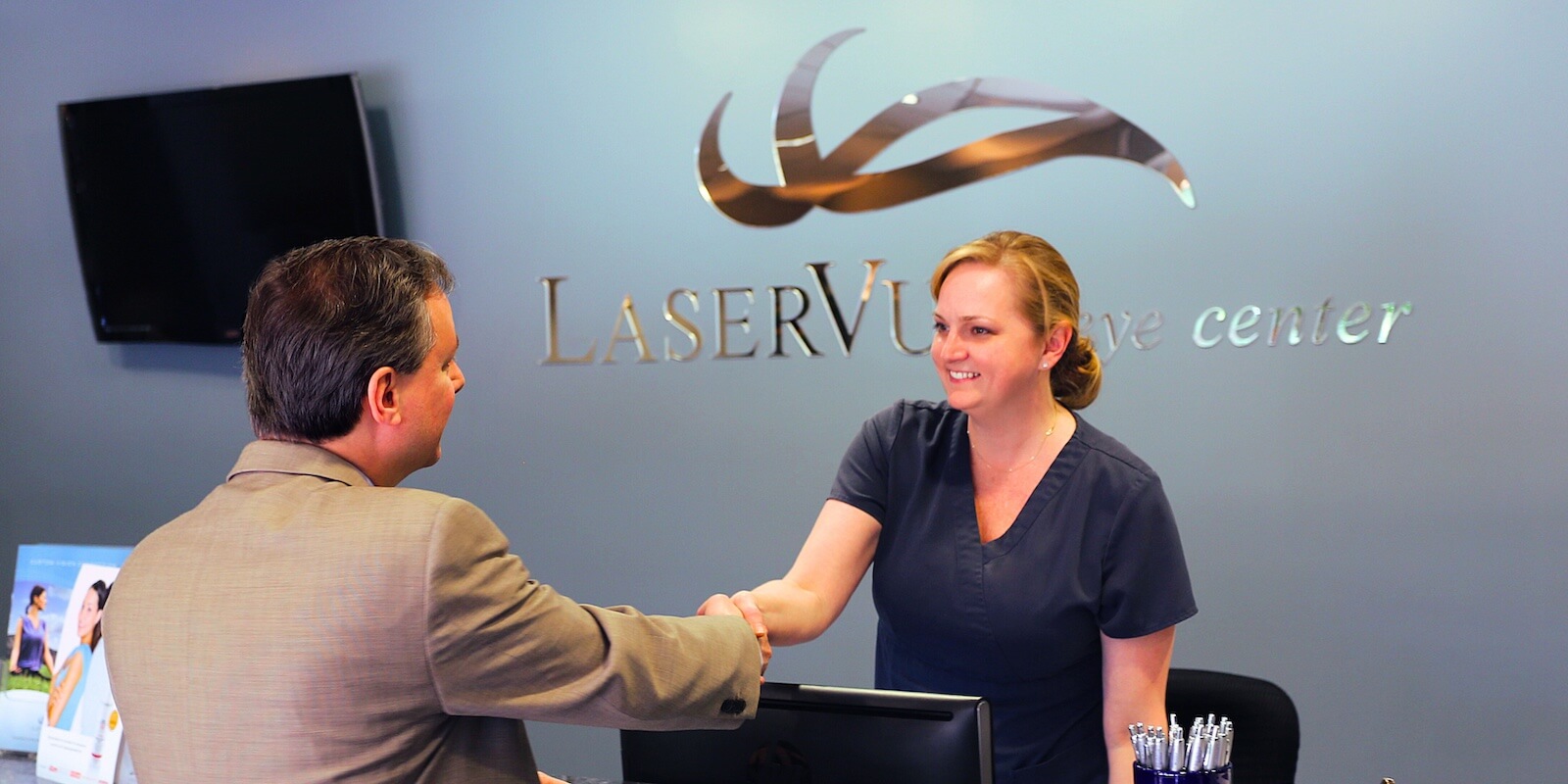Posted by: Jay Bansal, MD in Age-Related Eye Conditions,Cataracts,Uncategorized,Vision Correction Questions

Jay Bansal, MD

_
We are thrilled to offer the most advanced cataract surgery technology to our patients. Since acquiring the new LensAR ALLY Robotic Cataract Laser System™, LaserVue is among the first practices to offer Robotic Laser Cataract Surgery. Read below to learn what Robotic Laser Cataract Surgery is. Discover how it can help you see better and enjoy life more.
What are Cataracts, and How Do I Know if I Have Them?
Cataracts are a common eye condition. They happen when the natural lens of the eye gets cloudy. This can cause blurry vision, glare, and trouble seeing in low light.
Ready To Find Your Cataract Surgeon?
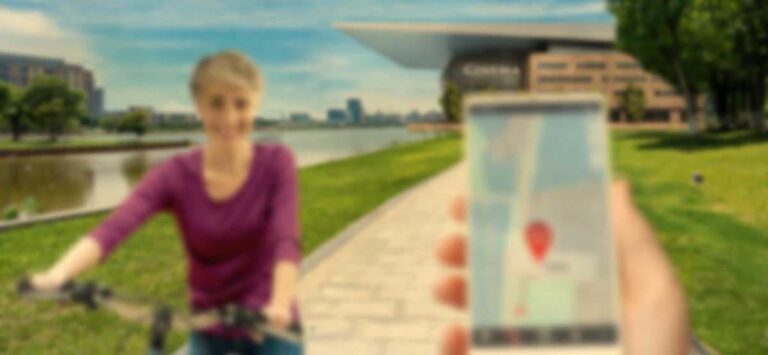
This clouding usually happens with age. However, other factors can also play a role. Some examples include diabetes, eye injury, long-term steroid use, or genetics.
Common symptoms are blurry or dim vision, sensitivity to light, trouble seeing at night, and halos around lights. If you have any of these symptoms, it might be time to see an eye doctor. They can give you a full eye exam to see if you need cataract surgery.
If you want more information about whether you’re a candidate for cataract surgery, I have a helpful tool on our website: The Cataract Self-Test. When you use this tool, my patient care team can provide you with more information about your vision correction options.
What is Robotic Laser Cataract Surgery using LensAR ALLY?
Robotic Laser Cataract Surgery (RLCS) uses the LensAR ALLY Laser Cataract Surgery System™. This technology combines femtosecond laser precision with computer guidance.
RLCS has improved opportunities for accuracy and efficiency compared to manual cataract surgery. This advanced procedure allows the surgeon to customize your procedure to fit your eyes. RLCS is also minimally invasive, making it easier to remove your cataracts with better than human precision.

The LensAR ALLY system uses clear 3D imaging and laser-guided incisions to improve each step of cataract removal. The system makes exact, bladeless cuts in the cornea, using automated lens fragmentation to help remove cloudy lenses easily.
By reducing the need for ultrasound energy, the procedure becomes gentler on the eye, resulting in a faster recovery. As a result, Robotic Laser Cataract Surgery can be smoother and less stressful for the eye. It also maximizes the chances of great vision by placing intraocular lenses (IOLs) more accurately.
How is LensAR ALLY Different from Manual Cataract Surgery?
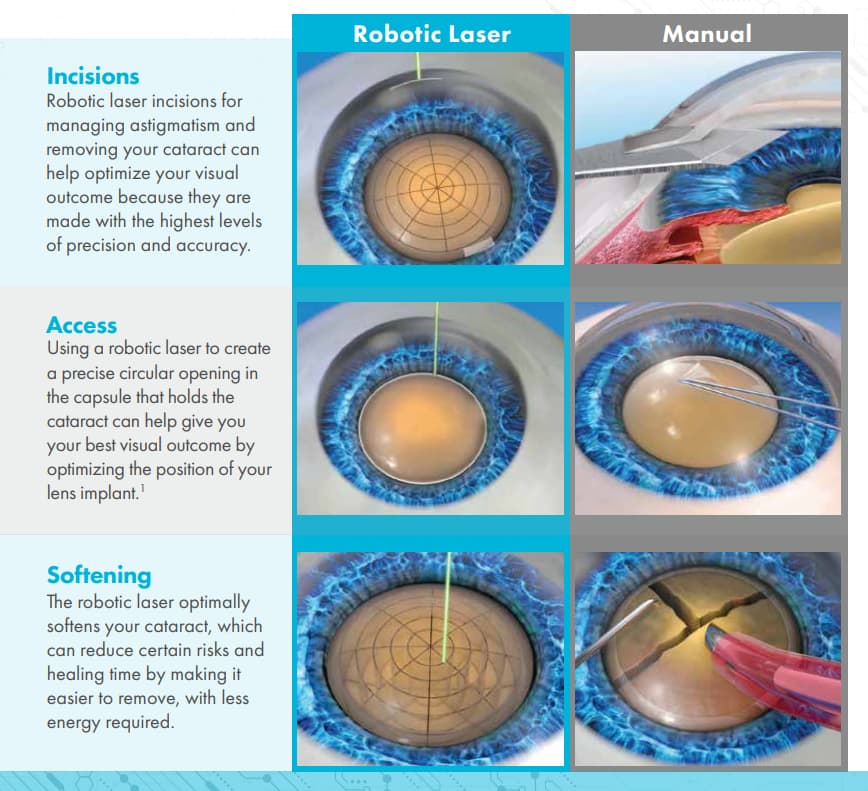
Manual cataract surgery, also known as phacoemulsification, is a widely practiced and effective procedure. It involves making a small incision on the cornea with a blade. Then, the surgeon manually opens the lens capsule to reach the cataract.
Afterwards, the surgeon uses an ultrasound probe to break up the cloudy lens into small fragments and suctions them out. In both manual and laser surgery, the surgeon implants an artificial intraocular lens (IOL) to restore clear vision.
While manual cataract surgery is safe and effective, it relies heavily on the surgeon’s manual skills and dexterity.
Robotic Laser Cataract Surgery with the LensAR ALLY system, on the other hand, uses a femtosecond laser. This laser makes precise, blade-free cuts.
Unlike manual surgery, RLCS offers perfectly round capsulotomies. This level of accuracy reduces variability, optimizes lens placement, and minimizes trauma to the surrounding eye tissue. The system’s 3D imaging can create a fully customized treatment plan. With laser technology, surgeons can design treatment plans for each patient’s unique eye anatomy.
At LaserVue, by leveraging the power of robotics, we now have a platform that elevates our patients’ experiences, procedural precision, and surgical outcomes. We are able to take our cataract surgery services to a new level as a result.
What are the Benefits of Laser Cataract Surgery Compared to Manual?
The benefits of Robotic Laser Cataract Surgery using LensAR ALLY are numerous. One of the primary advantages is the increased precision and accuracy of the procedure. The consistency and precision of its capsulotomies lead to more predictable lens positioning and improved vision outcomes.
This reduces refractive error and may lower their need for glasses or contact lenses. With better lens alignment, patients can see more clearly.
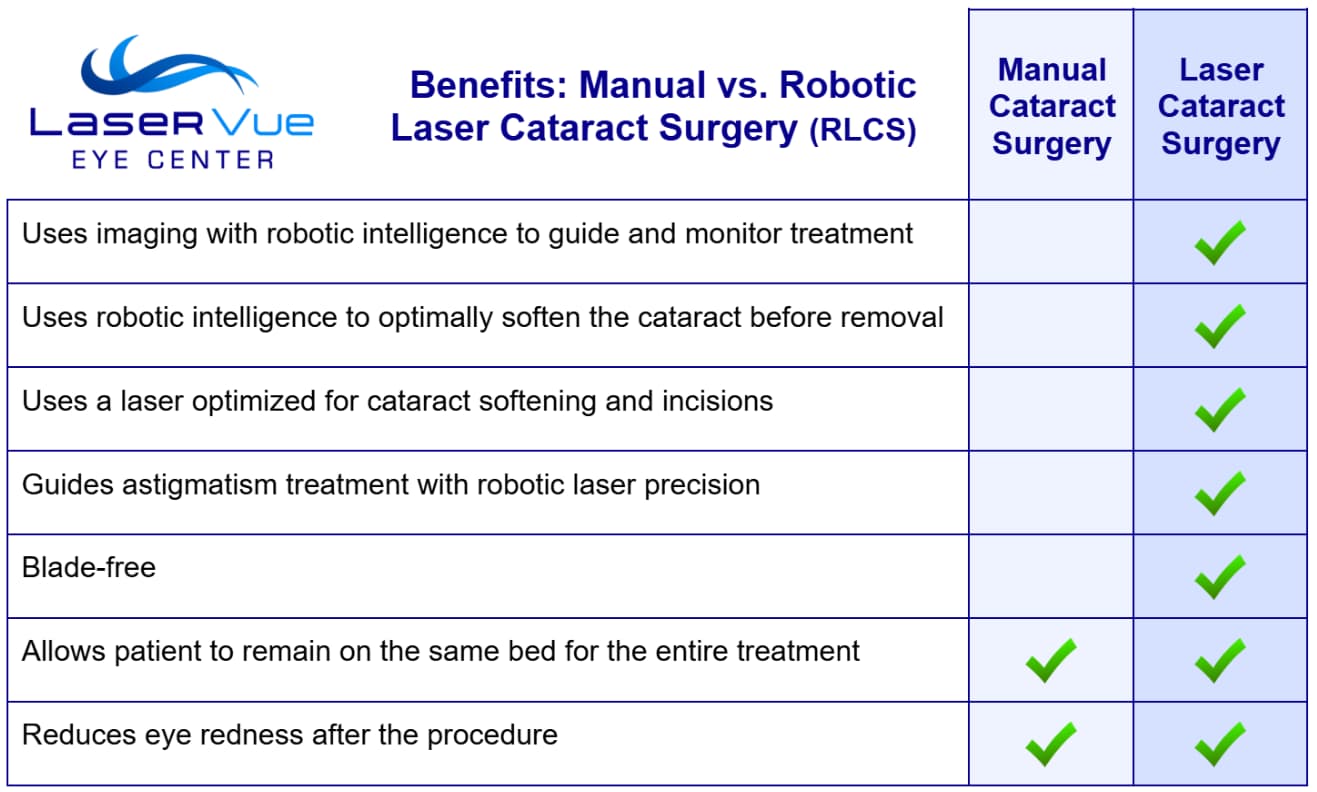
Reducing energy usage provides another significant benefit. Using the laser to soften the cataract means we need less ultrasound energy to remove the lens. This causes less trauma to the eye, and can lead to faster healing times, reduced inflammation, and a smoother recovery.
The LensAR ALLY system can also treat mild astigmatism. It does this by making precise incisions in the cornea which can help improve vision quality after surgery. Patients often feel more comfortable during and after this minimally-invasive procedure.
When Considering Cataract Surgery, How Should I Find the Right Surgeon?
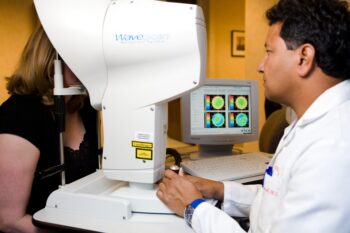
Choosing the right surgeon is one of the most important decisions you’ll make when considering cataract surgery. If you can, find an eye doctor who knows both manual and robotic laser cataract surgery. This can help your treatment.
Look for a board-certified ophthalmologist with a proven track record of successful outcomes.
Surgeons who specialize in advanced technologies, like the LensAR ALLY systems, are uniquely qualified to achieve your best vision.
Reading patient reviews and seeking referrals from trusted healthcare providers can also help you find a reputable surgeon.
Finally, schedule a consultation to discuss your visual goals and ask questions. You should ensure you feel comfortable with the surgeon’s approach and communication style.
When speaking to your doctor, ask about the technology they use. Inquire about their complication rates. Also, ask about their experience with premium intraocular lenses (IOLs) to reduce your need for glasses.
Conclusion
Robotic Laser Cataract Surgery represents a significant evolution in cataract treatment. With its superior precision, reduced energy usage, and improved visual outcomes, it offers clear advantages over traditional cataract surgery.
By understanding the differences between these procedures, you can make informed decisions about your eye care. At LaserVue, we dedicate ourselves to helping you achieve the best results for your vision and life.

You don’t need to wonder which treatment is best for you: Dr. Jay Bansal is available to consult with you today.
Visit Our Website or Contact Us to schedule your free consultation, or learn more about caring for your lifelong vision health.
Works Cited
- LensAR: Experience the Industry’s First Robotic Cataract Laser System. LENSAR 2024.
- LensAR: ALLY Adaptive Cataract Treatment System. LENSAR 2024.
- LensAR: ALLY System Adaptability. LENSAR 2024.
- ZEISS. Vision Simulation Tool.
More from LaserVue Eye Center
- Learn More: Robotic Laser Cataract Surgery at LaserVue
- Learn More: LensAR ALLY’s Robotic Laser Cataract Systems
- Speak to an expert eye doctor, no cost, no obligation: Book Your Free Consultation
- All Vision Services at LaserVue
